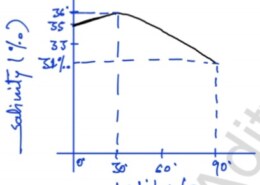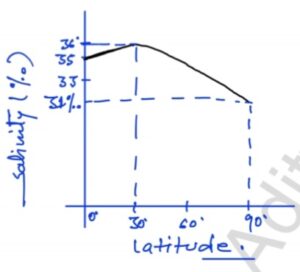Examine the soldiers’ experiences in the trenches and how trench warfare affected the character of fighting.
Polymetallic nodules (PMNs) are potato-shaped, largely porous nodules found in abundance carpeting the sea floor of world oceans in deep sea. Besides manganese and iron, they contain nickel, copper, cobalt, lead, molybdenum, cadmium, vanadium, titanium, of which nickel, cobalt and copper are consideRead more
Polymetallic nodules (PMNs) are potato-shaped, largely porous nodules found in abundance carpeting the sea floor of world oceans in deep sea. Besides manganese and iron, they contain nickel, copper, cobalt, lead, molybdenum, cadmium, vanadium, titanium, of which nickel, cobalt and copper are considered to be of economic and strategic importance.
Geographical distribution of PMNs:
PMNs were first discovered in the 19th century in the Kara Sea, in the Arctic Ocean off Siberia. Later, they were found to occur in most oceans of the world. However, nodules of economic interest are more localized. Three areas have been selected by industrial explorers:
- the centre of the north central Pacific Ocean,
- the Peru Basin in the south-east Pacific Ocean and
- the centre of the north Indian Ocean.
They can occur at any depth, but the highest concentrations have been found between 4,000 and 6,000m. 
Significance of PMNs:
-
- Economic significance:
- They contain significant amounts of critical metals known as Rare Earth Elements and other metals which are important for high-tech manufacturing industries like electronic devices, smartphones, batteries, solar panels etc.
- PMNs extracted from deep-ocean, in contrast to terrestrial deposits, contain multiple commodities in one deposit; for example, nodules from the Clarion-Clipperton Zone contain Mn, Ni, Cu and Co.
- Strategic significance: Presence of PMNs gives strategic edge to a country. For example, exploration of PMNs in India will not only help in countering the influence of China but also help. improve bilateral relations with Japan, Germany, South Korea etc.
- Ecological significance:
- Deep-ocean mining used to extract PMNs can also avoid some of the environmental issues associated with terrestrial mining. Unlike metal ores on land which rarely have metal yields above 20%, and are often less than 2%, these PMNs are 99% usable minerals 33% metal and the rest useful in products like construction aggregate and fertilizer since there are notoxic levels of heavy elements like mercury or arsenic.
- So there are no toxic tailings or mining waste like on land, no deforestation, no open pits, no contaminated rivers or aquifers etc.
- Social significance: Unlike much of the land mining, PMNs mining does not use child labour.
- Source of critical metals: The development of societies towards a more sustainable future cannot proceed without critical metals. Deep-ocean mining can not only deliver the metals necessary for this transition but can do so with a low carbon footprint which is 90% less than land mining.
Recognizing the significance of PMNs, India launched its Deep Ocean Mission to explore PMNs in the Indian Ocean. It is expected that extracting PMNs will help India strengthen its strategic position vis- à-vis China besides helping its economy to grow.
See less



The experiences of soldiers in the trenches during World War I were marked by prolonged exposure to danger, filth, and boredom, with frequent periods of intense violence and trauma. The impact of trench warfare on the nature of combat was profound, shaping the way armies fought, the psychology of soRead more
The experiences of soldiers in the trenches during World War I were marked by prolonged exposure to danger, filth, and boredom, with frequent periods of intense violence and trauma. The impact of trench warfare on the nature of combat was profound, shaping the way armies fought, the psychology of soldiers, and the consequences of war.
Physical and Mental Challenges:
Psychological Effects:
Impact on Combat:
Long-Term Consequences:
Lessons Learned:
- Need for Humanitarian Aid: The experiences of soldiers in the trenches highlight the importance of providing humanitarian aid to those affected by war.
- Importance of Mental Health: The war’s impact on mental health emphasizes the need for adequate support systems for soldiers dealing with trauma and stress.
- New Forms of Warfare: The development of new technologies and tactics during World War I has continued to shape the nature of warfare in subsequent conflicts.
See less